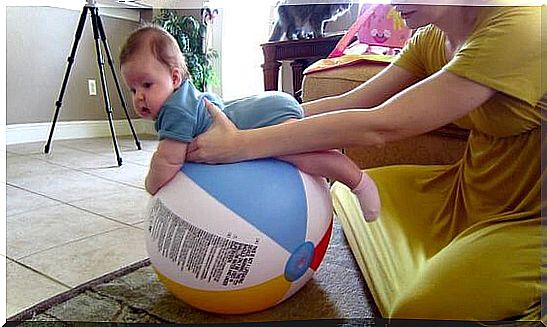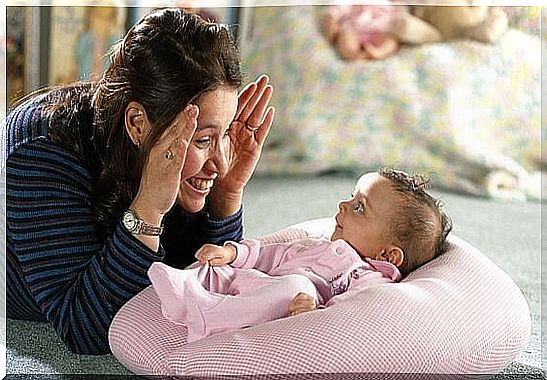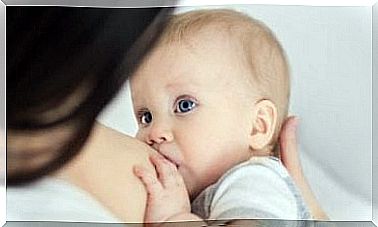Socio-emotional Stimulation Of Children: What Is It?

Socio-emotional stimulation aims to help the child adapt to the surrounding environment based on the sensations it transmits to him. Through movements and new activities, he is able to experience different emotions. He may feel anxious, cheerful or fearful and this will determine his responses into adulthood.
The socio-emotional development of the child begins from the first days of life and depends on his relationship with the outside world and other people. For this reason, adequate stimulation is recommended. After birth, the newborn begins to undergo changes at the biological level that we must be able to recognize and to which he will have to adapt.
In order for the child to overcome the first challenges that are presented to him, it is important that parents and family members help him in the adaptation process. Every new situation requires the baby a biological and emotional response, which allows him to relate to the environment that surrounds him and the people who live there. This is what is called socio-emotional development.
This development is based on the experiences the child experiences as he grows up. For this reason, in early childhood we must stimulate him on all possible occasions. These first stimuli must focus on the child’s bond with his own emotions and will be precursors of his personality.

How is socio-emotional stimulation carried out?
Many of the activities that are done with infants are perfectly suited to socio-emotional stimulation. For this, it is easy to take advantage of several moments to put it into action. There are many exercises that help stimulate the child, his emotions and adaptation to the surrounding environment, which forms the basis for the formation of his character.
In the first months of life, stimulation is done through movements and positions. In addition, the main habits of personal hygiene, nutrition and sleep begin to be created. Very often, we favor their responses to sensations without knowing it and in fact, if we look closely, we realize how they express themselves on an emotional level.
Expert advice for the first months of life
Specialists, for the socio-emotional stimulation of babies in the first months of life, propose the following ideas:
- During the first few weeks, we have to carry out balance exercises, placing the baby in unusual positions for a short time. You can try placing it in an inclined position, upright, sideways or upside down.
- We take advantage of breastfeeding to talk, caress and establish deeper contact. Looking him in the eye and smiling is very important, both for the child and for the parent.
- We try to maintain our personal hygiene, food and sleep habits. These constitute the main means of relating to the outside world.

- Let the baby follow our movements. We have to do it on purpose to get him to follow us.
- We make movements with the face, always facing the child, and wait for him to imitate us. Other gestures, such as waving your hand or nodding your head, are perfect.
- Many of the exercises we teach the baby we can repeat with games when he is older. We can dress, comb and feed the puppets to put what they have learned into practice.
- Let’s explain to him where some feelings come from: if he feels pain, if it’s cold or if he cries, let’s take the opportunity to illustrate the meaning of what he feels.
Later stages of socio-emotional stimulation
- At around twelve months, the baby can begin to cooperate when dressing or eating, he can lift his feet, use his hands and take the bottle by himself. Let him do it.
- In accordance with the age, it is recommended to allow him to participate in the activities we are doing. This favors independence and brings him closer to the context in which he lives.
- Let’s help him to get to know the people who revolve around him, indicating them by names, saying who they are and what their relationship with him is. Later, we can also ask him who the person we are naming him is. At first he will look for her and then he will point at her with his hand.
- It is important to explain to him everything we can, especially the sensations and the names of things. Even when the child does not understand exactly, he captures the various meanings.
Q hen the child reaches 15 months, you can see more clearly the traits of his personality. By then, we will have stimulated him enough to anticipate his reactions to different situations.
From here on out, socio-emotional development is more focused on identity, making the main source of stimulus change. At that point, the child will be a little more independent, enough that he can decide whether to follow our example or have his own way. In carrying out many actions, he may become more self-centered and insistent.









